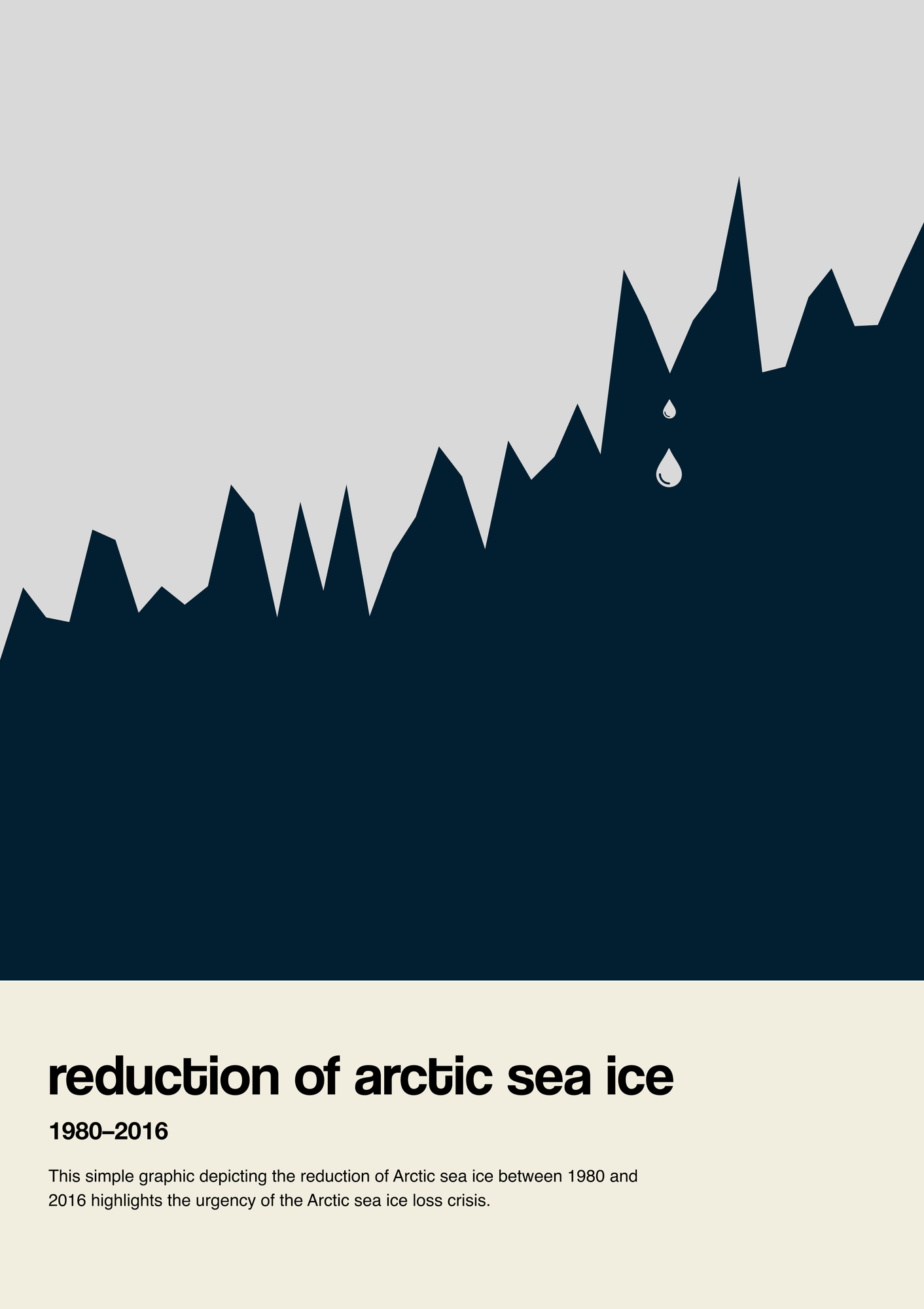Little Picture - reduction in arctic ice
sea ice extent is a key indicator of climate change
Long-term monitoring of sea ice loss is essential to understanding the scope of the problem and developing effective solutions. Satellites play a crucial role in monitoring Arctic sea ice loss by capturing the unique pattern of melting ice that scars the region’s landscape.
These data enable scientists to track sea ice decline, identify the drivers of change, and provide early-warning of future impacts on the Arctic and beyond. This simple graphic charts the rate of Arctic sea ice loss between 1980-2016.

About
***The Little Picture describes the decline of sea ice in the Arctic between 1980 and 2020. There are already various graphs and visualisations that impressively show the decline of the ice (in volume and also as area). The idea behind this Little Picture is to show the change in the rate of ice loses affecting the region over time.
Data
This Little Picture uses the following datasets:
- ESA Sea Ice Climate Change Initiative (Sea_Ice_cci): Sea Ice Concentration Climate Data Record from the AMSR-E and AMSR-2 instruments at 25km grid spacing, version 2.1
- MET Norway
Code
The code and documentation used to build this Little Picture can be found on the following github repository – https://github.com/littlepictures/clip_ghg_inversion_vs_inventory
Licence
This little picture is published under CC BY-SA 4.0 licence.
The big picture
The European Space Agency (ESA), the European Centre for Medium-Range Weather Forecasts (ECMWF), and the European Organisation for the Exploitation of Meteorological Satellites (EUMETSAT) work closely together to measure, process & make space-derived information about the climate available.
ESA
The mission of the Climate Change Initiative (CCI) is to realise the full potential of the long-term global Earth Observation archives that the European Space Agency (ESA), together with its Member states, has established over the past 40 years, as a significant and timely contribution to the climate databases required by the United Nations Framework Convention on Climate Change. The ESA Climate Office provides a free & open CCI data facility bringing together ECV data from across its twenty-seven climate science projects, including a CCI Data Standards and a CCI Toolbox.
ECMWF
The Copernicus Climate Change Service (C3S) supports society by providing freely available authoritative information about the past, present and future climate in Europe and the rest of the World. C3S is one of the six thematic information services provided by the Copernicus Earth Observation Programme of the European Union, and has been entrusted by the European Commission to the European Centre for Medium-Range Weather Forecasts (ECMWF). One of the core components of C3S includes the Climate Data Store (CDS). This is a one-stop shop for climate information. It provides free and easy access to a wide range of climate datasets via a searchable catalogue. A freely available online toolbox allows users to build workflows and applications suited to their needs.
EUMETSAT
EUMETSAT operates missions both to provide weather and climate data for its member states, and as an entrusted entity under the Copernicus programme. Several missions are operated collaboratively with ESA, providing complimentary expertise and data processing, to process and distribute land, marine, and atmosphere relevant products for users. Data from EUMETSAT operated missions is frequently available in near-real-time, facilitating rapid monitoring and forecasting. Via EUMETCast, the EUMETSAT Data Services, or WEkEO, users can access data in ways that suit their needs. The data is used by the EUMETSAT satellite applications facilities, as well as across the various Copernicus Services.
next

